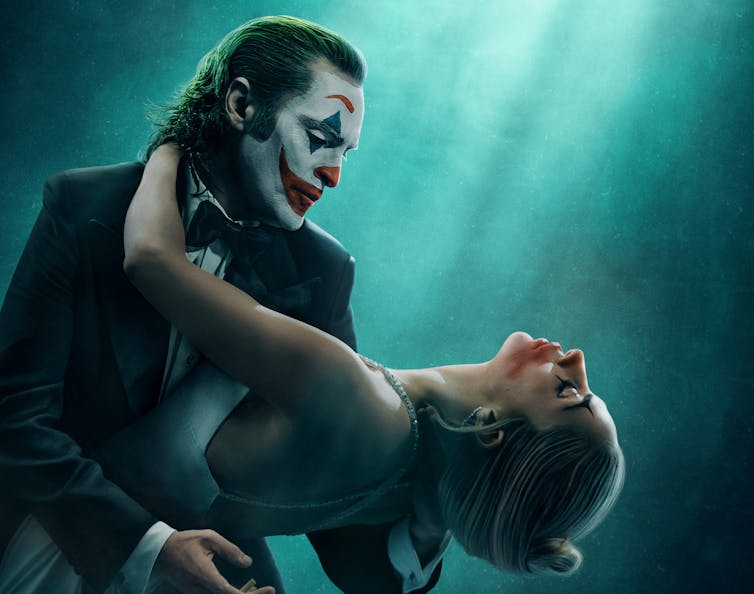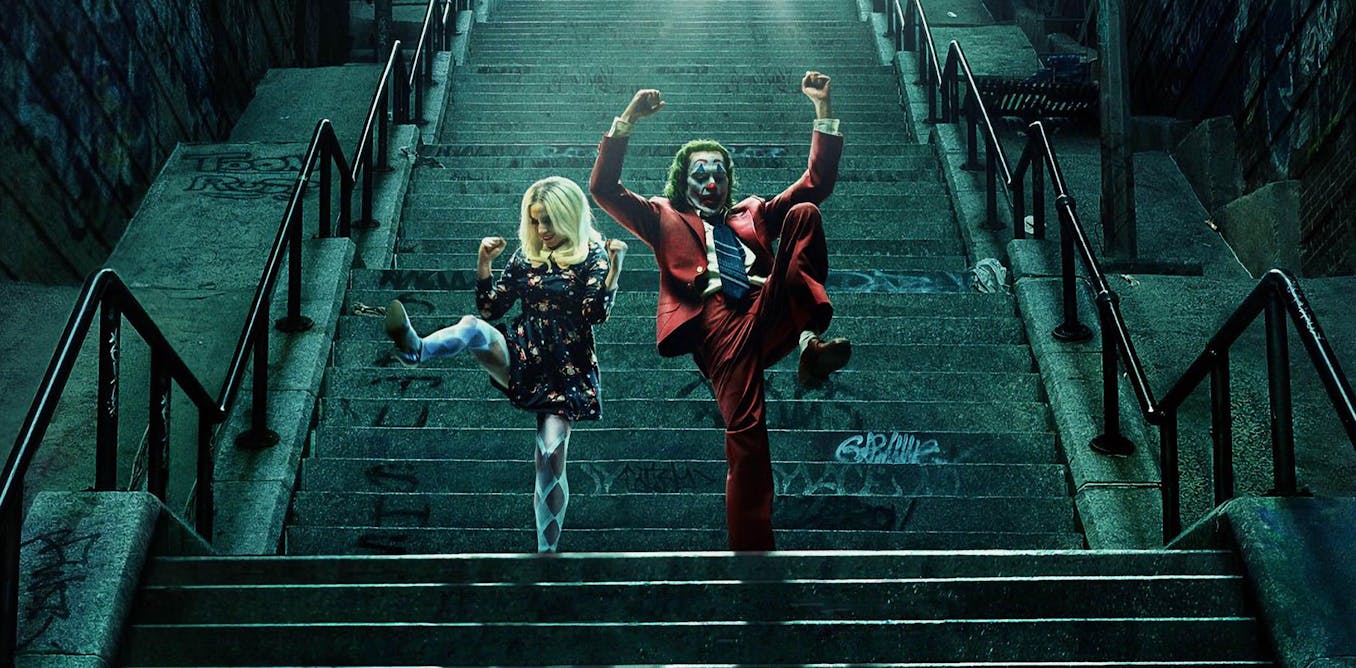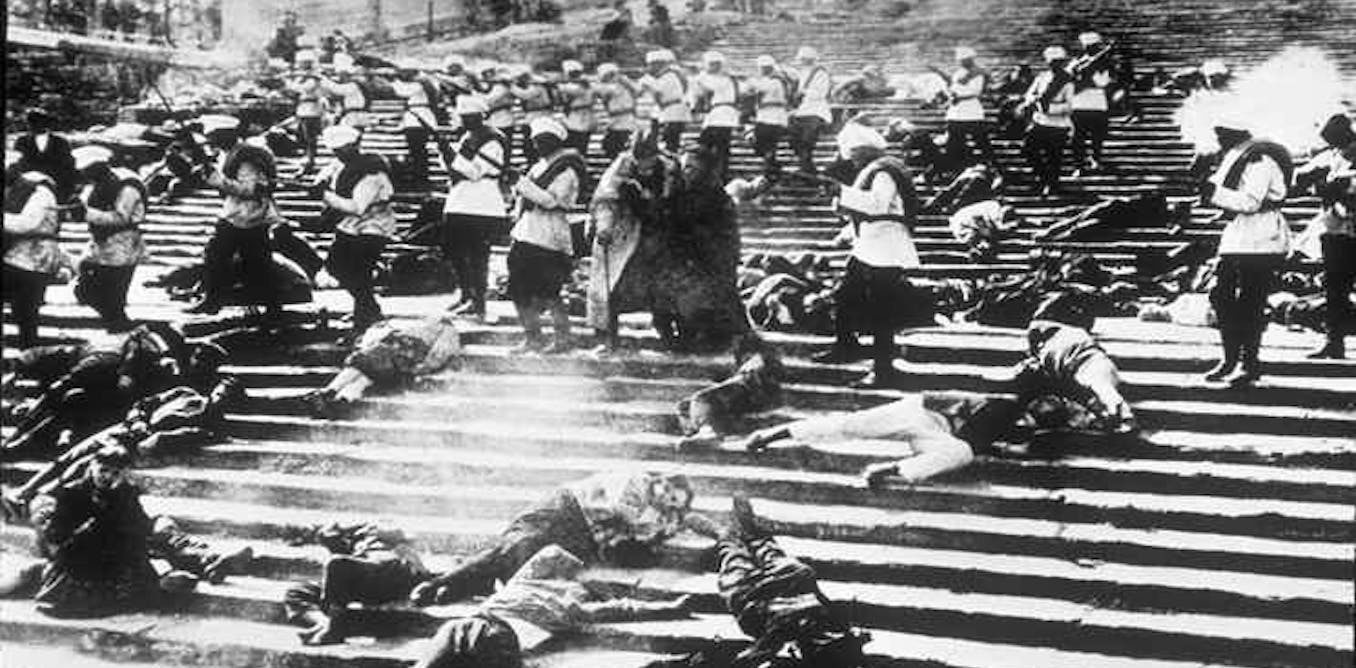Todd Phillips’ 2017 blockbuster Joker was a standalone origin story for the DC Universe’s most celebrated super-villain, The Joker, who has been Batman’s recurring nemesis since 1940. Drawing overtly on Martin Scorsese’s classic studies of American psychosis, Taxi Driver (1976) and The King of Comedy (1982), it was the boldest attempt yet to render comic-book characters with psychological depth and complexity on film.
But audiences and critics had mixed feelings about Joker, real name Arthur Fleck, who was portrayed by Joaquin Phoenix in an Oscar-winning performance. The film seemed ambivalent to Fleck’s murderous violence, which it portrayed as the inevitable consequence of his abandonment by a callous, shallow and vicious culture. It meant that some fans saw Joker not as pitiable – but heroic.
Seemingly taken aback by this reaction, Phillips’ belated sequel, Joker: Folie à Deux, sets out to deliver an unmistakable correction – at considerable length and with singleminded insistence. The film is an extended, self-righteous rebuke to anyone foolish enough to have mistaken Joker for an incel manifesto.
Spending US$200 million (£152 million) to berate the film’s potential audience in this fashion is certainly a bold and novel strategy. As an ethical stance, it may even be admirable. Unfortunately, dramatic interest, character development and audience engagement are all collateral damage of Phillips’ take-no-prisoners approach.
Few blockbuster films can ever have been this relentlessly claustrophobic, obstinately static and unrelievedly grim.
In Joker: Folie à Deux, Fleck is now incarcerated awaiting trial. In place of the first film’s picturesquely squalid Gotham locations, the sequel unfolds almost entirely in two, equally dreary institutional settings – the cells and corridors of Arkham asylum and the Gotham courthouse where his trial eventually takes place.
Almost nothing of note happens in either location, except for various moments designed to underscore Fleck’s psychosis for those who missed it first time around. That is, barring one key new ingredient.
Enter Harley Quinn
That new ingredient is, of course, the introduction of Lady Gaga as Harleen “Lee” Quinzel, a fellow Arkham patient enraptured by Joker’s exploits. She is the film’s version of Harley Quinn, the Joker’s sometime lover and a hugely popular DC character in her own right. But Gaga’s avid fan-base will surely be disappointed by how little this extraordinary talent is given to do.
EPK
Gaga’s incandescent screen presence lends her scenes with Phoenix a dangerous, thrilling edge. It makes the emaciated, medicated Fleck’s reinvigoration through this partner-in-mayhem palpable and plausible. Later, however, once Quinzel leaves the asylum (and styles herself as Joker’s spokesperson and soulmate), she largely disappears. Except, that is, as a weirdly mute background presence through the interminable trial scenes that occupy most of the film’s second half.
Quinzel’s increasingly ambiguous motives are never really explored, let alone resolved, and her own subjectivity is almost entirely absent.
Gaga’s musical prowess powers the fantasy musical sequences where Fleck and Quinzel celebrate their nihilistic amour fou through performances of classic Broadway show tunes. These numbers supply the film’s few points of tonal or visual relief.
Though Phoenix’s song-and-dance skills are wildly outclassed, the sheer commitment of his performance throughout the film can’t be faulted. But, even here, Phillips keeps Gaga’s performances on a tight (and visually underwhelming) leash, shackled to the film’s dogged, browbeating pursuit of its central thesis.

EPK
Phillips teases the audience throughout with the prospect that Joker and Quinn will at any moment break free of the retro social-realist grime around them into their full-blown comic-book personas.
But as the film trudges on, it becomes increasingly apparent that not only this tease – but its frustration and ultimate denial – is the entire point. Joker: Folie à Deux, in effect, sets out to deliver a punishment to its audience for their callow indulgence of Fleck’s psychosis in the first film. It relentlessly drums home the yawning chasm between the incendiary revolutionary nihilism Joker’s acolytes (personified in the film by Quinzel) project upon him, and the desperate misery and mental agony of his actual condition.
When Fleck fires his legal counsel and chooses instead to represent himself, now in full Joker regalia, the stage finally seems set for Joker – and the film alike – to take flight. Not least given that countless Hollywood courtroom dramas have primed us to anticipate legal pyrotechnics and stunning reversals of fortune. But instead Joker: Folie A Deux maintains its dour mood all the way to the thuddingly anticlimactic end.
As Fleck finally falters, unable to live up to or live out the distorted self-image projected onto the Joker persona, Quinzel walks out on him. It’s Joker she wanted, not Fleck. Whatever our better moral judgments, viewers may well share her disappointment. But for Phillips, it would seem, that disappointment is precisely the point.

Looking for something good? Cut through the noise with a carefully curated selection of the latest releases, live events and exhibitions, straight to your inbox every fortnight, on Fridays. Sign up here.

The post “Folie à Deux is relentlessly claustrophobic – and castigates its fans at every turn” by Barry Langford, Professor of Film Studies, Royal Holloway University of London was published on 10/04/2024 by theconversation.com




































Leave a Reply